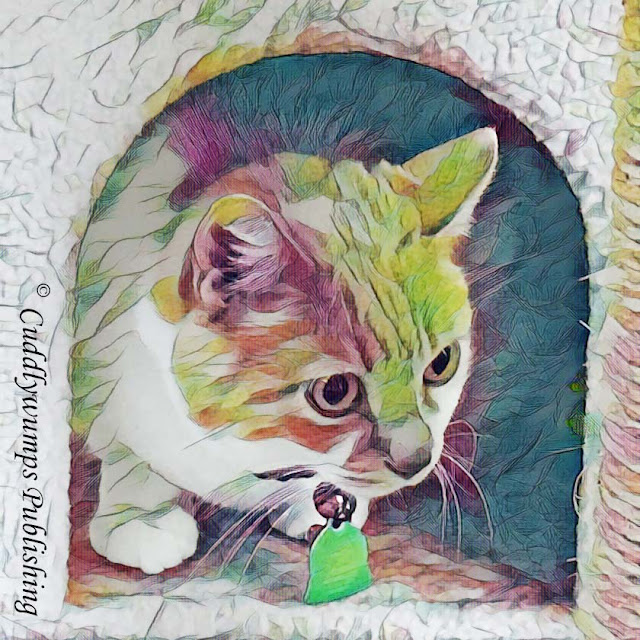Today we’re sharing something we just discovered yesterday
on
The Public Domain Review (a
great resource if you’re looking for public domain material). What we found is an
1860 book called
The Nine Lives of a Cat: A Tale of Wonder. It was written by Charles
Bennett and published in London by Griffith and Farran. Bennett bills this tome
as a “tale of wonder … told for children,” but it’s hardly the sort of children’s
tale that would pass muster today.
Things were different for cats--and kids--back then
When we first meet the cat who is the star of the story, we
see her stealing a fish. Then we learn that the cat pays a disproportionate penalty
for this offense:
But when she was young,
Poor Kitty was hung;
Fortunately, though, this is a resourceful cat who keeps a
knife in her pocket, so she manages to free herself. Now she’s down to eight
lives.
And that is pretty much how the story goes: The cat suffers
some potentially deadly calamity only to escape with her life, thanks to her
own ability and cleverness. Some of these near-death experiences are the result
of the cat’s own actions. She is burned while trying to snag meat off the fire
and falls off a house while chasing a mouse, for example. But, disturbingly,
she is also nearly done in three times by the deliberate actions of humans. One
person attempts to hang her, as we’ve already seen; one attempts to drown her;
and one attempts to shoot her. The disturbing part of these incidents is not
that they happen at all, but that they’re mentioned so casually. The boy who
tries to drown the cat isn’t described as “naughty” or “wicked” or any of the HBO
words we might use; he’s just a kid having some fun.
 |
| Here, the cat falls of a house but survives by landing on her feet. |
We do have to wonder if any 19th-century children were
inspired by this or similar stories to try to harm cats or other animals. We
suspect the answer is yes, but sadly, we also suspect that not much inspiration
would have been needed in an age when violence toward animals was so accepted
that it could be included in a children’s story without comment.
We’re glad humans—many of them, anyway—see things
differently today.
In case you’re wondering, the cat lives to an old age and
finally dies. Not exactly uplifting, although the author does remind us that
the cat had lived nine lives, so we guess that’s something.
We suppose there is a moral to the story, but we’re not
quite sure what it is. We're willing to entertain ideas in the comments.
Read with caution
If you’re interested in exploring how cats were portrayed in the past—or what children’s books were like in the past—we think
The Nine Lives of a Cat is worth a look. None of the illustrations are horribly graphic, but we know some of you find any depictions of animal abuse upsetting. If you fall into that category, you should definitely skip this book. For others of you, we recommend taking a look at it not because it’s a great read—we thought it was awfully clunky and mostly not very enjoyable—but because it’s a piece of cat history. Also, the “Catalogue of New and Popular Works” at the back of the book is pretty interesting all by itself.

















